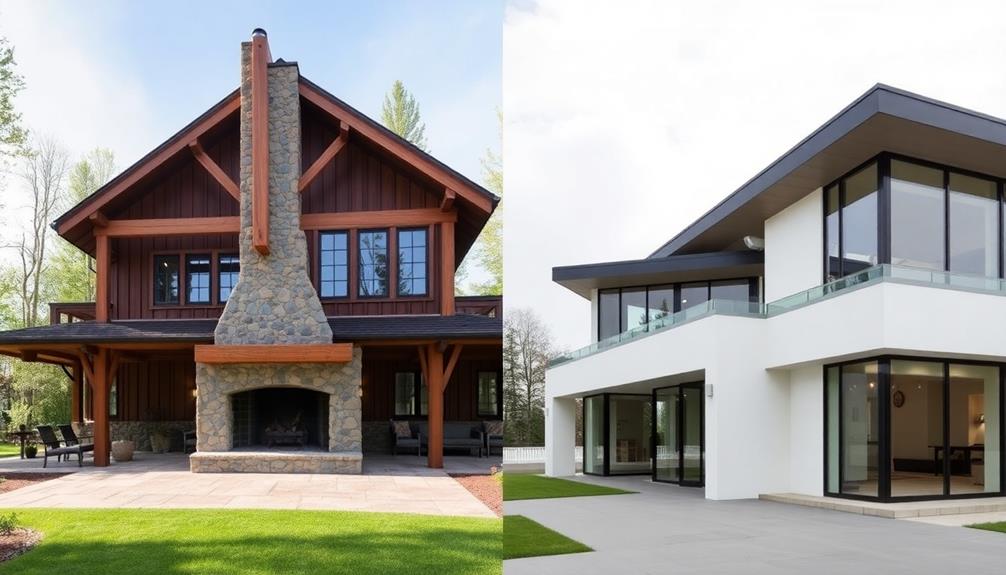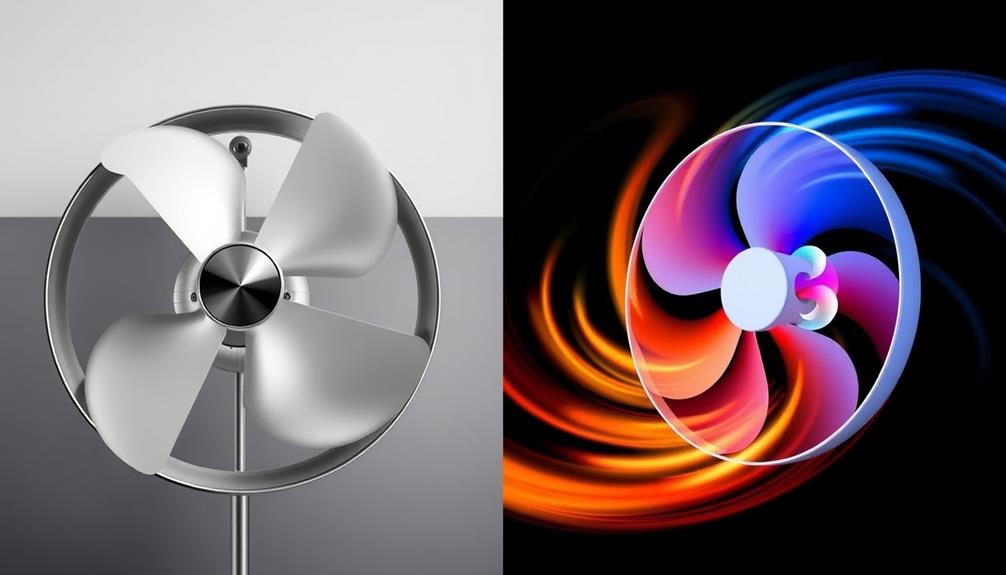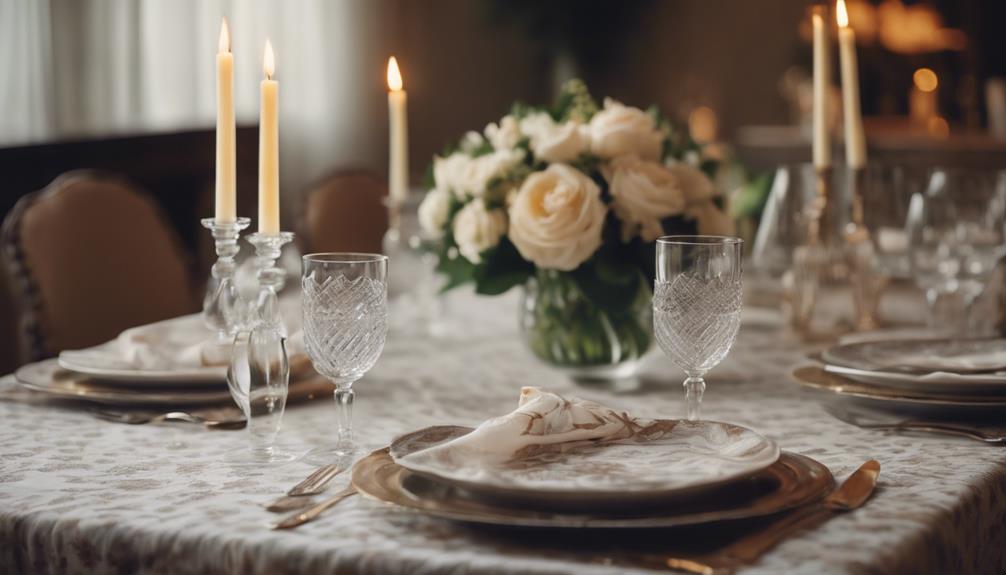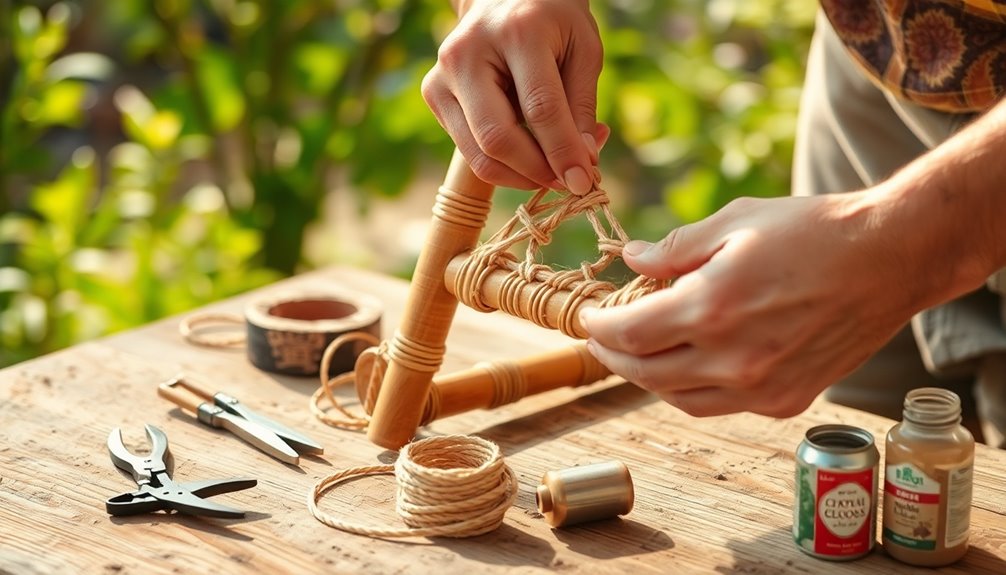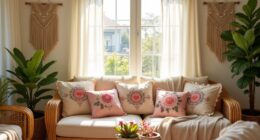When comparing traditional homes with modern homes, you will encounter an interesting clash of design styles. Traditional homes are known for their intricate details and segmented spaces, which reflect historical significance. On the other hand, modern designs prioritize open-concept layouts, sleek lines, and the use of innovative materials such as steel and concrete. This shift emphasizes evolving lifestyles, emphasizing flexibility and communal living. Modern spaces are flooded with natural light through large windows, while traditional designs typically have smaller windows, leading to distinct room divisions. Ultimately, your choice of home style reveals your values and connection to culture. Discover how these contrasting styles can influence your living experience and impact the ambiance and functionality of your home.
Key Takeaways
- Traditional homes emphasize intricate details and compartmentalized rooms, reflecting historical influences and cultural significance.
- Modern homes prioritize open-concept layouts, promoting spatial flow and adaptability for contemporary lifestyles.
- Furniture and decor styles differ, with traditional emphasizing ornate craftsmanship and modern focusing on sleek, minimalist designs.
- Window and lighting choices contrast, as modern designs favor large windows for natural light, while traditional homes often rely on smaller, artificial sources.
- Both styles express evolving cultural values; traditional homes evoke nostalgia, while modern architecture represents innovation and sustainability.
Architecture Styles Overview
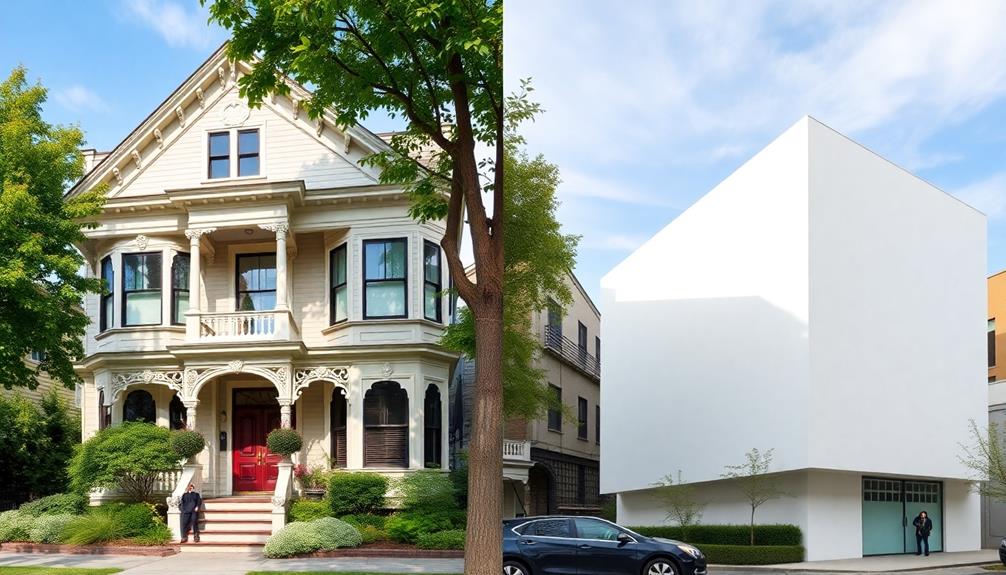
When you immerse yourself in the world of architecture, you'll quickly notice the stark contrast between traditional and modern homes. Traditional homes often reflect historical influences, showcasing intricate details and craftsmanship that tell stories of the past. Styles like Victorian and Colonial evoke a sense of nostalgia, emphasizing cultural significance.
In contrast, modern designs embrace innovation, using industrial materials like steel and concrete to create sleek, functional spaces. You'll find clean lines and minimalist aesthetics that prioritize simplicity and efficiency.
Both styles highlight how architecture evolves, reflecting changing societal values and lifestyles. As you explore these differences, you'll appreciate how each style contributes uniquely to the built environment, shaping the way we experience and interact with our surroundings.
Variations in Floor Plans
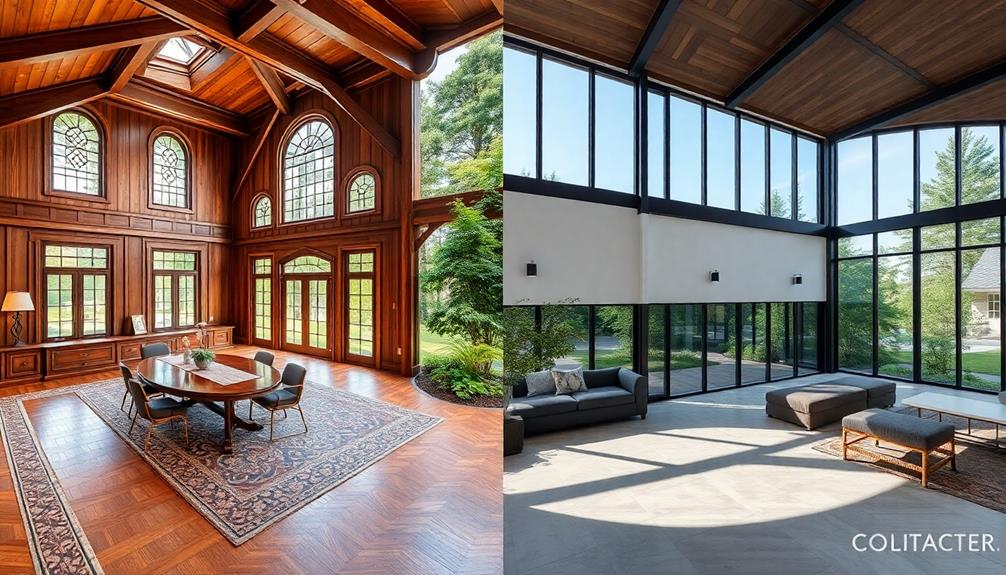
While exploring the variations in floor plans, you'll notice that traditional homes often feature compartmentalized rooms designed for specific functions. Each space, whether it's a formal dining room or a cozy study, offers a clear purpose and promotes a sense of separation.
In contrast, modern homes embrace open-concept layouts that enhance spatial flow and connectivity. You'll find multi-functional areas that allow you to adapt your living space to various activities, encouraging interaction among family members.
This shift reflects changing lifestyles, as many people now prioritize versatility and communal living. Ultimately, these differing floor plans illustrate how architectural choices can greatly impact your everyday experience and how you engage with your home.
Room Layout Comparisons
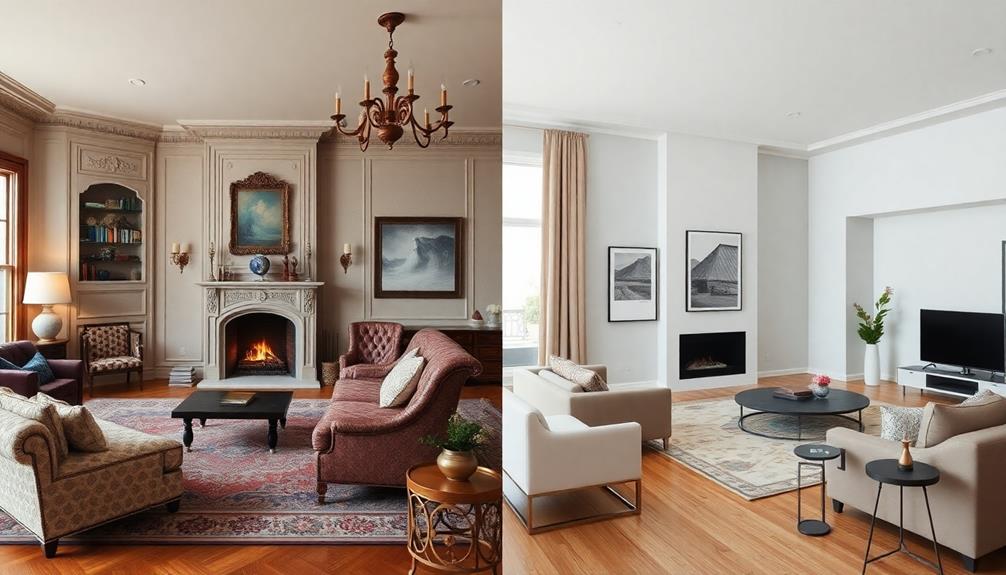
In comparing room layouts, you'll quickly notice that traditional designs create distinct separations between spaces, often featuring foyers and halls that guide you from one room to another.
Each room typically serves a single purpose, like dining or relaxing, providing a structured flow. This compartmentalization can enhance privacy but limits flexibility in how you use your space.
In contrast, modern layouts prioritize open spaces, allowing for seamless exchanges between areas.
With fewer walls, you can easily adapt rooms for various activities, fostering a more interactive environment.
The optimized floor plans in modern homes maximize usability and encourage a sense of togetherness, reflecting contemporary lifestyles that value connectivity and dynamic living experiences.
The Open Concept Trend
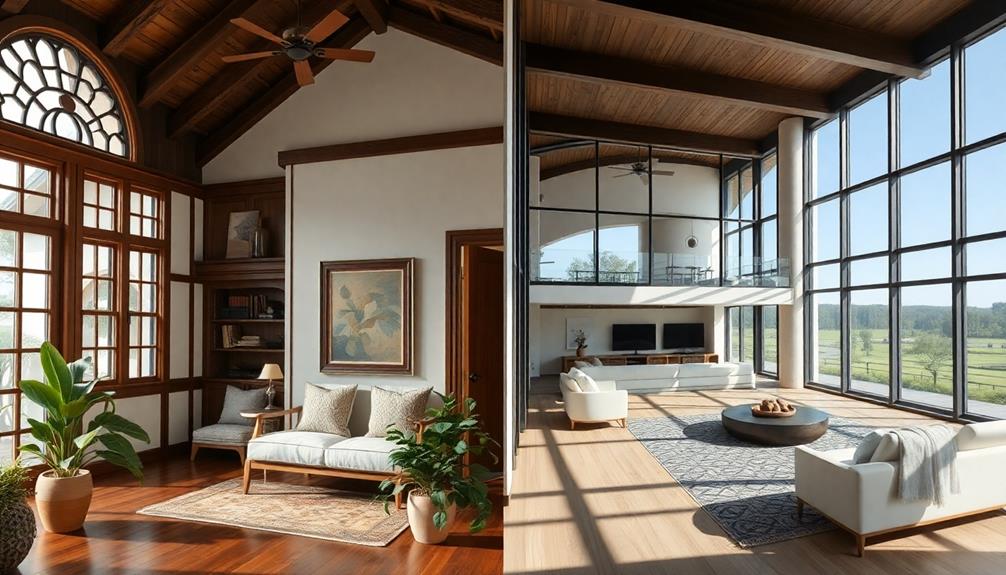
Embracing the open concept trend transforms how you experience and interact with your living space. This design approach eliminates barriers, creating a seamless flow between areas.
You'll find that:
- Enhanced Connectivity: Family interactions increase as living, dining, and kitchen spaces blend together.
- Flexibility in Function: Spaces can easily adapt for various activities, from hosting to relaxing.
- Spacious Living: Removing interior walls can make even smaller homes feel larger and airier.
- Modern Aesthetic: Open layouts often embody a minimalist feel, showcasing clean lines and simplicity.
Window and Lighting Choices
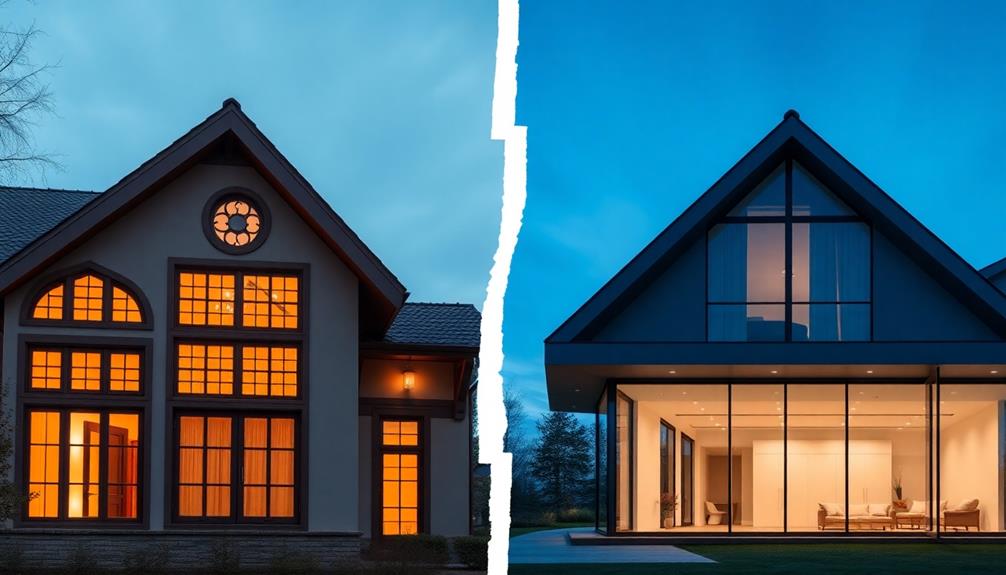
When it comes to window and lighting choices, most people find that the right design can dramatically influence the ambiance of their homes. In modern homes, large windows are common, allowing in ample natural light and creating a sense of openness. You'll notice that strategically placed windows enhance brightness, reducing the need for artificial lighting. On the other hand, traditional homes often rely on more artificial sources, using smaller windows that offer less illumination.
| Style | Window Design | Lighting Approach |
|---|---|---|
| Modern | Large, expansive windows | Natural light emphasis |
| Traditional | Smaller, detailed windows | Reliance on artificial |
| Energy-Efficient | Focus on sustainability | LED and smart lighting |
Choosing the right style can transform your living space!
Furniture and Decor Styles
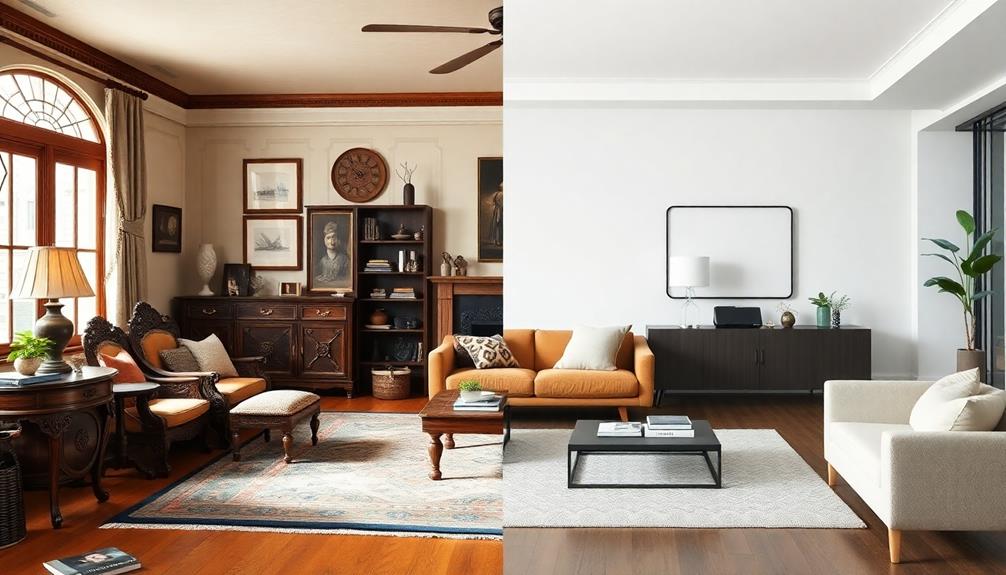
Window and lighting choices play a significant role in setting the mood of a home, but furniture and decor styles further define the character of your space.
When you choose between traditional and modern styles, consider these key elements:
- Material: Traditional furniture often features dark woods and ornate details, while modern pieces focus on sleek lines and industrial materials.
- Color Palette: Traditional decor tends to use rich, muted colors, whereas modern decor embraces bold hues and minimalist aesthetics.
- Functionality: Modern furniture prioritizes usability and versatility, while traditional designs emphasize craftsmanship and form.
- Ambiance: The overall feel of your space can shift dramatically based on your furniture choices, influencing comfort and style.
Cultural Significance of Designs
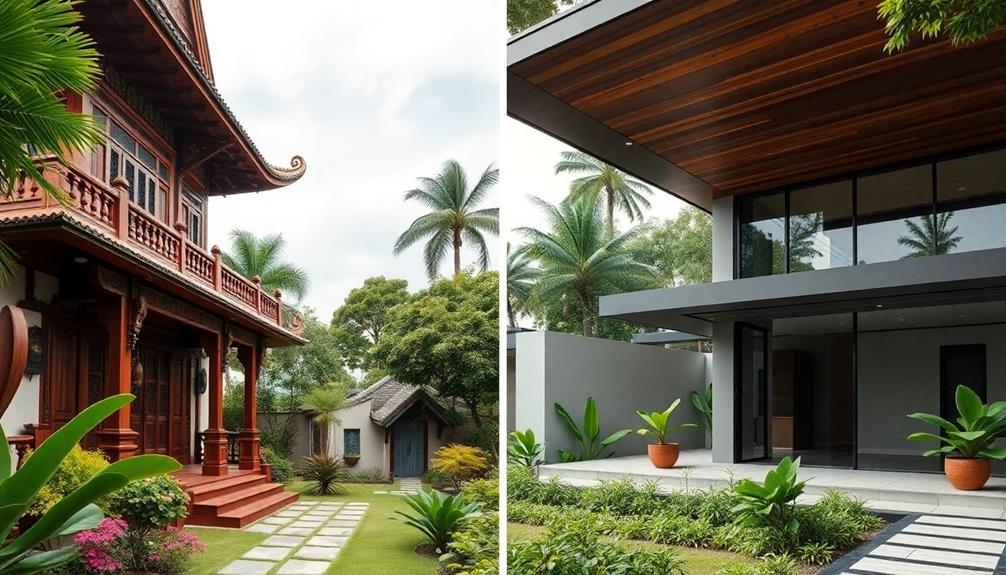
Architecture often tells a story, and the cultural significance of designs is no exception. When you step into a traditional home, you're entering a space rich with history and heritage. These designs reflect the values and lifestyles of the past, evoking nostalgia and a sense of belonging.
On the other hand, modern architecture embodies current societal changes and innovative thinking. It prioritizes functionality and simplicity, showcasing contemporary values like sustainability and minimalism. This movement has led to the emergence of the **neoeclectic architectural revolution**, where designers blend elements from various styles to create unique, adaptable spaces. This approach, while rooted in modernism, allows for greater creativity and personalization, aligning with the diverse needs of today’s communities. As a result, architecture has become a reflection not only of function but also of the varied cultural and aesthetic preferences that define the present era.
Both styles reveal how culture evolves over time, expressing identity and community. By choosing one style over the other, you're not just selecting a home; you're making a statement about your values and how you connect with your surroundings.
Each design carries its own narrative worth exploring.
Frequently Asked Questions
What Are the Costs Associated With Building Traditional Versus Modern Homes?
When building a home, consider that traditional styles often incur higher costs due to intricate details and materials. In contrast, modern designs typically focus on efficiency, potentially lowering overall expenses while maximizing functionality and space.
How Do Traditional and Modern Homes Affect Resale Value?
Did you know homes with open-concept designs can sell for up to 20% more? Resale value often hinges on current market trends, with traditional homes attracting buyers seeking nostalgia and modern ones appealing to those favoring innovation.
What Are the Environmental Impacts of Traditional vs. Modern Building Materials?
When considering building materials, you'll find traditional ones often use more natural resources, while modern materials can be eco-friendly yet energy-intensive. Your choice impacts sustainability, energy efficiency, and the overall environmental footprint of your home.
Which Home Style Requires More Maintenance Over Time?
Imagine nurturing a vintage car; it demands more upkeep than a sleek electric model. Similarly, traditional homes typically require more maintenance due to their intricate details, while modern designs often prioritize low-maintenance materials and simplicity.
How Do Climate and Location Influence Design Choices in Traditional and Modern Homes?
Climate and location shape your design choices substantially. You'll consider insulation, materials, and orientation to optimize energy efficiency. A home in a hot area needs shading, while colder climates require robust heating solutions and durable construction.
Conclusion
In the end, whether you lean towards traditional charm or modern sleekness, it's clear that each style offers its own unique flair. Embracing the best of both worlds can create a home that reflects your personality and lifestyle. Remember, you can have your cake and eat it too! By mixing elements from both styles, you not only enhance your living space but also celebrate the rich tapestry of architectural history that shapes our communities today.
